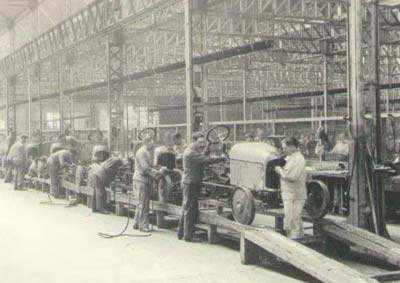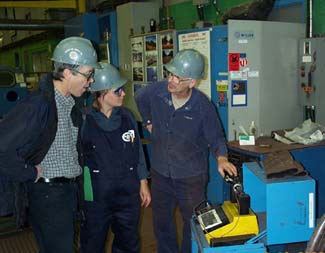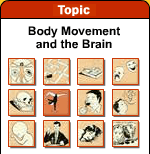|
|
|
|
 |
| Making
a Voluntary Movement |
 |
|
|
|

 |
 |
 |
In 1939, to solve certain
problems caused by repetitive manual labour on assembly lines
(but with the ultimate goal of increasing productivity even
further), Harvard University began conducting a research
project for Western Electric.
Somewhat randomly, the Harvard researchers began to modify
certain factors in the organization of work, such as lighting,
the timing and duration of workers' breaks, and overall work
schedules. Curiously, no matter what changes were made, productivity
increased. The conclusion: when managers take an interest in
workers (or pretend to do so), they produce more because they
feel valued.
In another classic experiment, when workers in a plant were
divided into two groups, and one was given a vitamin and the
other a placebo, absenteeism decreased by the same amount in
both groups. This discovery (named the Hawthorne effect,
after the name of the Western Electric plant near Chicago where
the experiment was conducted) gave rise to the human-relations
trend in corporate management.
|
|
|
| THE ORGANIZATION
OF MANUAL WORK |
|
Taylorism became
the dominant method of organizing work in the early 20th century.
Based on separating the design of tasks from their performance,
it allowed for tremendous gains in productivity compared with
pre-industrial, artisanal production.
As early as 1908, automobile manufacturer Henry Ford saw the many
benefits that his industry could derive from applying Taylor's
theories. When Ford introduced the assembly line to build his Model
Ts, Taylorism became Fordism. The term Fordism thus refers to the
rationalization of the Taylorist method of organizing work through
the creation of assembly lines, which made standardization and
mass production possible.
 |
The advantage of the assembly line was that it brought the
work to the worker instead of making the worker go to the
work. In Ford's auto plants, workers were never supposed
to have to stoop, stretch, or take more then one step in
any direction. By the 1920s, thanks to the assembly line,
it took only 1/12 as much time to build an automobile as
it previously had. |
By continuing to promote the division of
tasks, the ideologues of Fordism soon revealed the limitations
of these principles. By reducing workers to the status of machines,
these principles ultimately impaired the profitability of the enterprise
itself. With the depression of the 1930s, social protest movements
also emerged to which employers were forced to respond.
As a result, bosses began to pay special attention to "human
relations" within the firm. To put it more clearly, they tried
to get workers to identify subjectively with the company's goals.
Improvements in the work environment in terms of atmosphere, physical
amenities, and communication also had positive impacts on employees'
productivity (see sidebar).
During this same period, some unionized workers began to stress
the importance of enriching jobs by giving workers tasks from which
they could derive a sense of personal achievement. It was also
during this period that ideas such as decentralization and self-management
were first raised.
Since the 1950s, technological progress has brought significant
changes to the principles of Taylorism and Fordism. The old-fashioned
assembly line was divided into a series of fixed workstations constrained
by the slowest operation. But now, instead of being treated as
an additive process, production is regarded as a continuous flow.
Production workers' jobs have come to include a larger element
of monitoring and supervision, in which semi-autonomous teams organize
themselves, assign their own tasks, and make their own decisions
concerning production.
These employees are also expected to control the quality
of their own product and maintain their own machines. If
problems arise, the team members co-operate to get production
going again. And if the company makes changes in its product
line or processes, these workers must be able to adapt to
them. This versatility lets the company reduce downtime and
increase productivity. In short, this form of job enrichment
makes employees feel that they are "indispensable". |
 Source: Denis Simard, Cégep
Sept-Iles
Source: Denis Simard, Cégep
Sept-Iles |
This production method is often called Toyotism,
after the Japanese automobile maker Toyota, which was the first
to put it into practice. In this method, productivity gains no
longer come from simplifying tasks and intensifying the work pace,
as in Fordism, but instead come from increasing workers' flexibility
and thus maximizing their usefulness to the company. In both cases,
however, the company's objective is still to increase productivity
and thus increase its profits by getting more out of its workers.
The robots used
on assembly lines are machines designed to replace human
hands. These machines can be programmed to perform myriad
tasks with strength and accuracy, in locations that would
be dangerous, hostile, or hard to access for human beings.
While automated machines repeat the same operations indefinitely,
robots can make certain choices. This flexibility in their
operating cycle is made possible by the computers that control
them. Some robots are shaped like human beings and are therefore
called androids.

|
|
|







